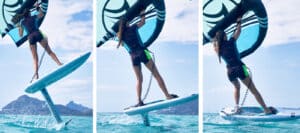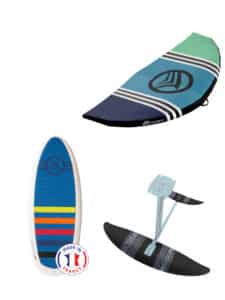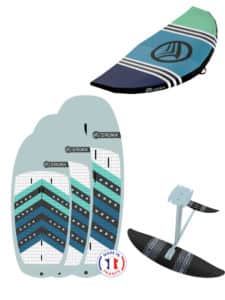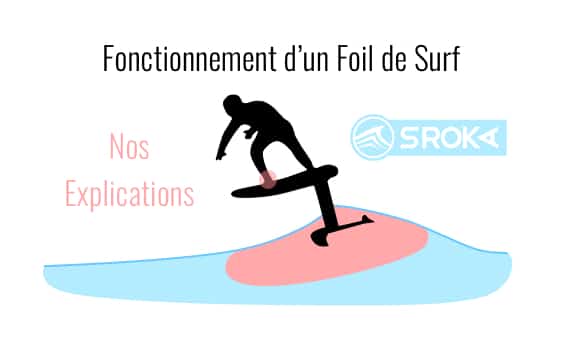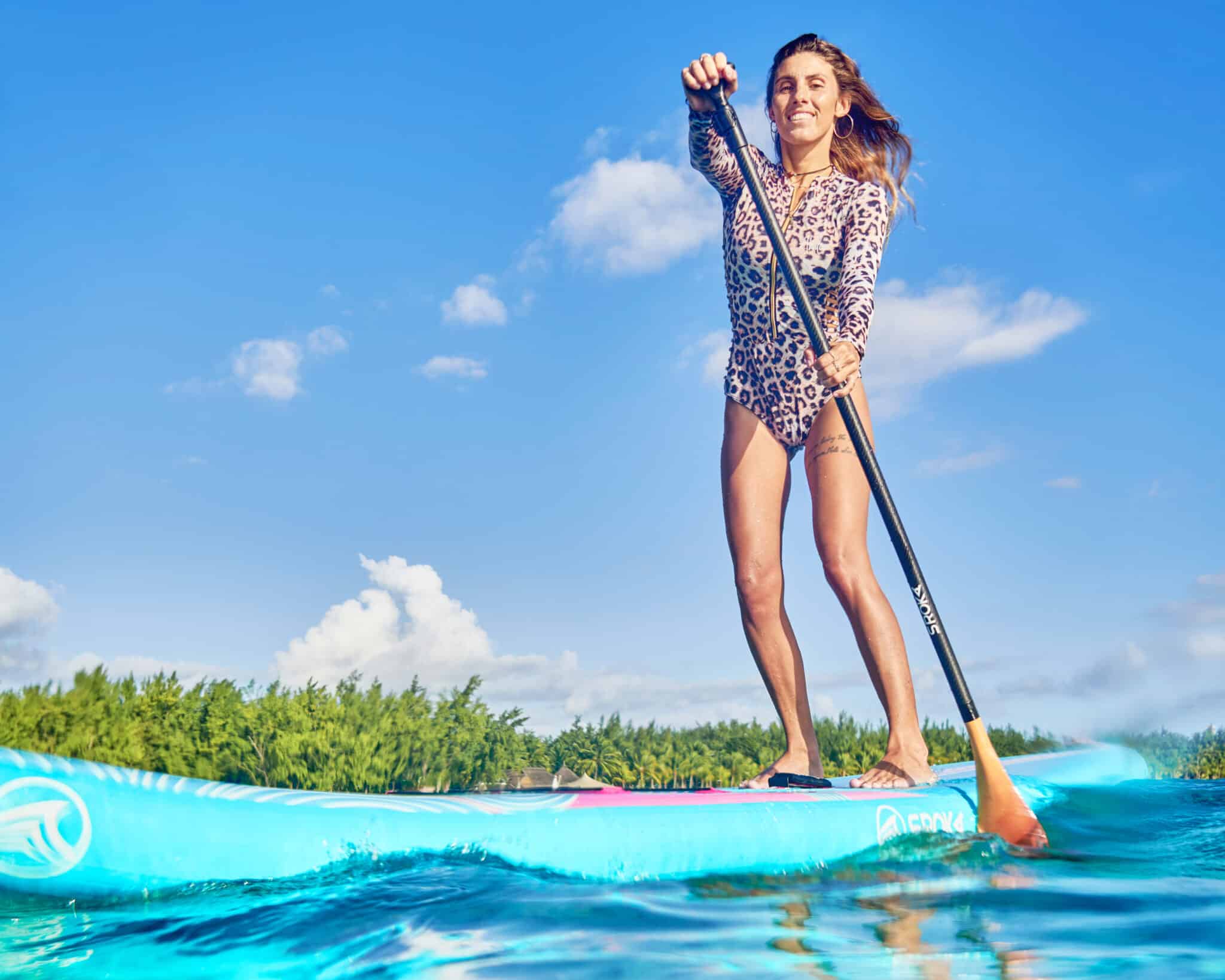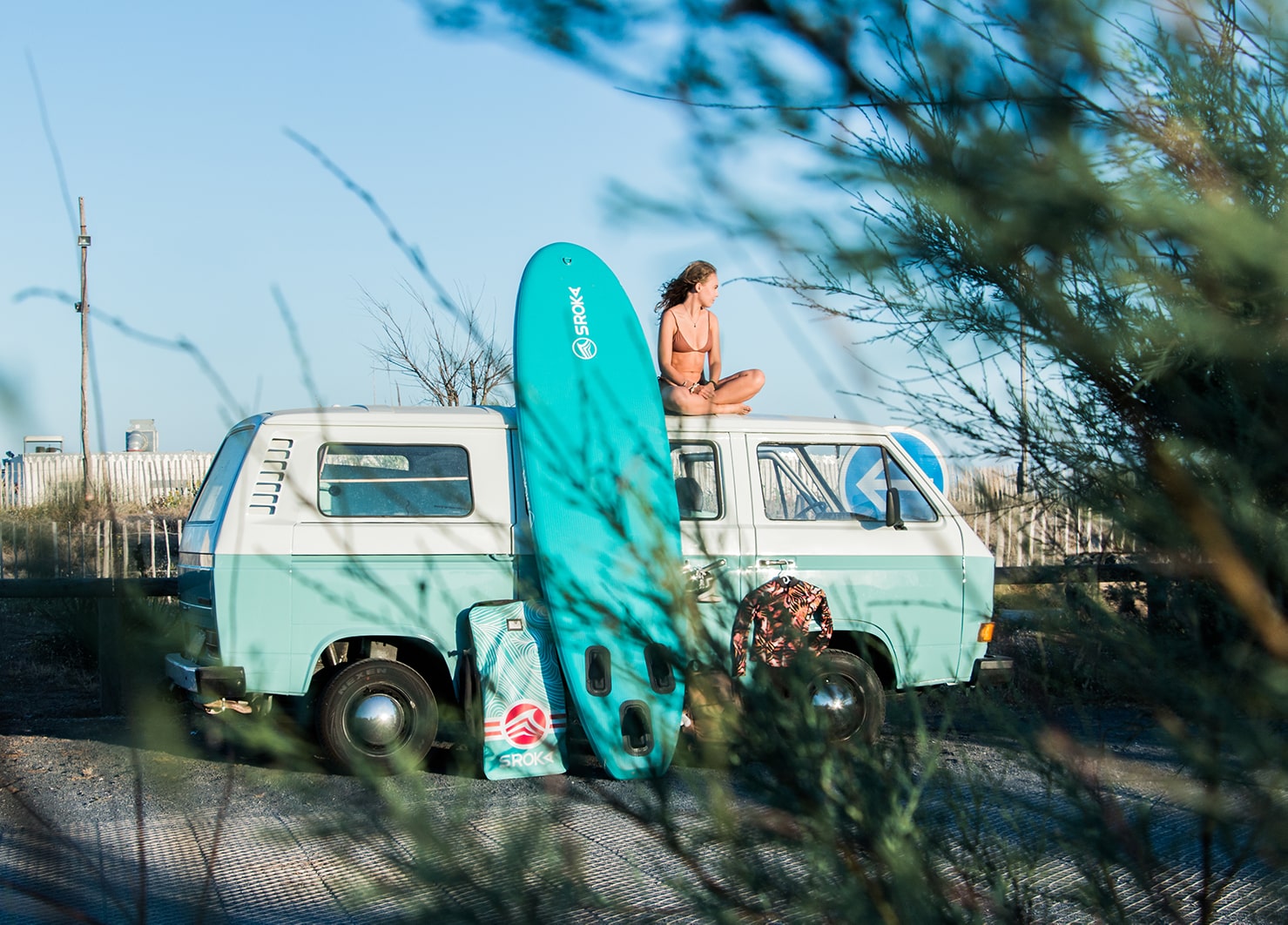Louis-Arnaud surf-foil in Mauritius, equipped with the Fast Flyer 4’6 board and the High Aspect 1190 Lift S-foil Summary Composition of a surf foil Principles …
How to Jump Well in Wing Foil – Level 1
Once they are familiar with the sensations of flying in
Wing Foil
, some practitioners want to exploit the potential of this sport to the fullest. In order to fulfill your desires for freeride sailing and tricks, we create High-performance and manoeuvrable wing foil products and packs. We pay attention to making sure that they are scalable, to follow you in your beginnings, until you meet your desires for freeride and performance. Sharing our passion for foiling goes far beyond the creation of products, we make sure to give you the best advice to have fun on the water. Want to take it to the next level and send your first jumps? Here are all our recommendations on “How to Jump Well in Wing Foil“, to push the limits of this sport.
7 Tips for Wing Foil Jumping (Level 1)
THE SPOT AND THE CONDITIONS
Unlike some foiling disciplines, WingFoiling does not necessarily require powerful waves. It is quite possible to start on a flat body of water on a first try. However, the ideal is to start during a fairly windy session (at least 20 knots), with enough chop and/or swell to help you with the impulse of the jump. Also think of a spot with enough background. Indeed, you could damage your foil during the landing or in the event of a fall.
THE EQUIPMENT
When you start jumping in WingFoil, prioritize safety above all and equip yourself with protection, helmet and an impact vest with specific accessories for wingfoil.
For jumping, a slightly smaller float will be ideal, due to its increased responsiveness and
small footprint
. These boards are usually equipped with
foot-strap inserts
, which are very useful for jumping. The straps will give you stability in flight,
control and
you won’t lose the board in the air
. A board that is too big will not be suitable for jumps at all. We advise you to have a board equal to or less than 5’5 (depending on the size).
For more information on the use of straps or strapless in Wing Foil, we invite you to read this dedicated article. Finally, tohave maximum speed and an optimal jump, we recommend a fast foil and a relatively small front fin (over
1500 cm2).
Find our SROKA quiver for jumping in Wing Foil at the end of the article
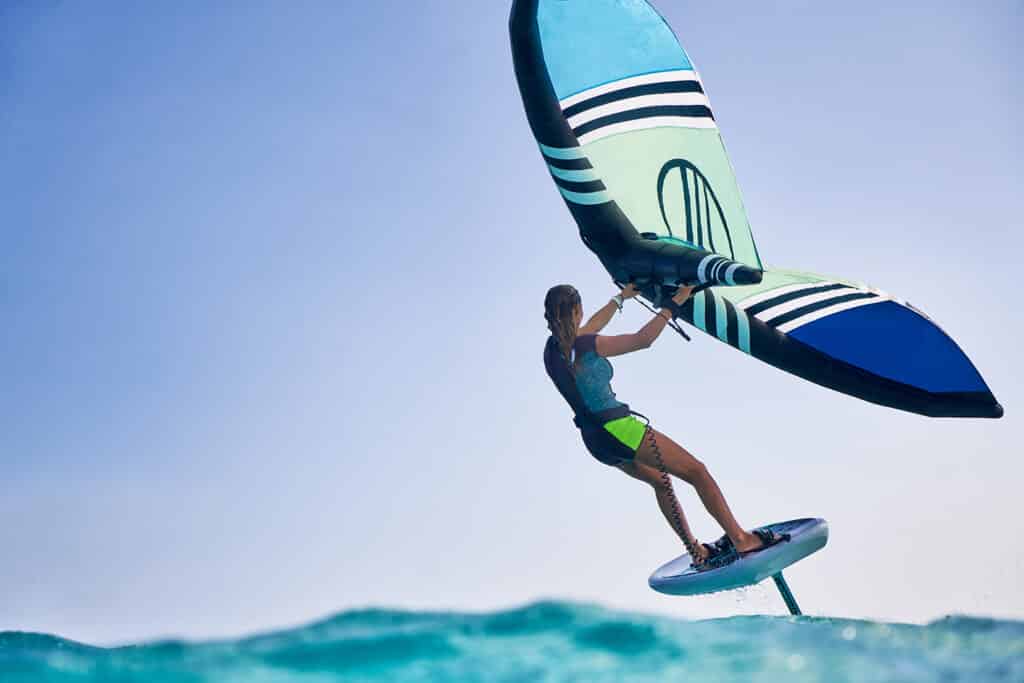
LA PREPARATION
Well balanced on your board, veer crooked, take maximum speed by charging with your wing and foil (i.e. by being notched as much as possible on your board by pressing on your heels and pulling on the tips of your feet). Get the most power out of your kite to accelerate. To do this, set thesail in front of you as vertical as possible to catch the maximum wind. Position yourself on your preferred side to start jumping.
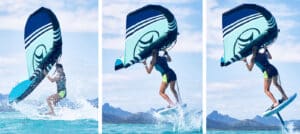
THE IMPULSE
Locate a section (chop or a small wave) in front of you.
As you get to the top of your wave, flex your legs more and more (three to four meters forward) to prepare for the impulse and get the maximum amount of power (keep notching and pressing the heels). Your gaze should be directed towards the area of impact (the area where the jump is triggered). As you get closer to the top of the wave, go up slightly into the wind while continuing to gain maximum power.
F
lick your legs
, crouch down and, just before impact (take-off), Add pressure to your front leg to bring the foil down and back up. This will generate additional lift force at the time of take-off (You should have the sensation that the board is nose-down just before impact). Make sure that the front of the board does not touch the water, as this can slow you down and become unbalanced. This step is very important in order to maximize the power transmitted into the foil at the moment of impact and thus increase your chances of climbing as high as possible.
TAKE-OFF
At this point, move slightly closer to the wind axis (lofer) and continue to gain maximum speed. At take-off, put the weight on the back leg to raise the foil. Relax your legs by pushing on them to jump as high as possible. You’re jumping. You can now position the wing above your head by flexing your arms (umbrella position).
THE FLIGHT
As soon as you take off, hold your wing above you like a parachute. Orient it in order to get as high as possible. Pay attention to your position: don’t lean back or forward and stay as grouped together as possible to better control your flight and descent. In case of total loss of control, do not hesitate to detach yourself from the board to avoid hurting yourself.
DESCENT AND LANDING
This is the second part of the jump. Stay bunched up while keeping the nose of the board facing the sky, so you land on the back of the board. Keep your wing as an umbrella until you get to the reception. Straighten your legs a little before touching the water to cushion the landing in the water and flex them again to cushion when the foil is going to touch the water. If your landing is successful, the foil will fly straight back into the air once the board is out of the water.
For a smooth landing, never fall flat with all your weight down. It could just as easily cause you to fall, injure yourself, and break your board. Therefore, never land flat, prefer to land from the back of the board.
Learning to jump requires learning time and repetition. So don’t hesitate to practice.
Our SROKA quiver for jumping in Wing Foil
Pack Wingfoil performance 4’6 Fast Flyer
The Wingfoil Performance 4’6 Fast Flyer Pack has been designed for the most experienced riders who want to increase their sensations and take their jumps, curves and freestyle tricks to the next level. The combination of the lightweight and highly manoeuvrable Fast Flyer 4’6 (with strap inserts) with the 2021 Wing Sroka and the S-Foil 1750 will boost your performance and allow you to exploit the full potential of the Wing Foil.
Sky Rider Complete Wing Foil Pack
This stiff pack is the perfect quiver for riders who are new to freeriding or looking for a little more volume. The Sky Rider 5’5 , with strap inserts, has been designed for Wing Foil performance . Like the Fast Flyer, all manufacturing steps are 100% Made in Brittany. We are once again including our 2021 Wing Sroka and the S-Foil 1750 in this pack, a guarantee of quality, versatility and speed.
In short:
- If you’re just starting out, don’t forget to equip yourself with protective gear
- Choose a spot with chop
- Set off on your preferred stance and pick up speed as you load up your wing and foil
- Locate a section to lean on, bend your legs to push the foil in
- Straighten your legs to provoke the impulse, while lining the wing arm extended above your head as much as possible
- Stay well above the board for the duration of the flight and descent
- Cushion by straightening your legs by pushing the front fin in first
- Keep the wing edged above your head throughout the landing
Advanced tips/pro tips:
- Focus your eyes on the determined landing zone
- Take your time and go gradually
If you still have questions about this, or for any other request, please do not hesitate to contact us !
Article you may be interested in
Did you know that paddle boarding is a great way to strengthen your body? Not only does this activity allow you to escape on the …
Are you looking for an inflatable paddle board for the summer to sail at sea or in lakes? The inflatable paddle board really has a …
What is Wing Foil? Wing Foil is the latest in board sports. This consists of manipulating a wing held with both hands (“wing”) with a …

